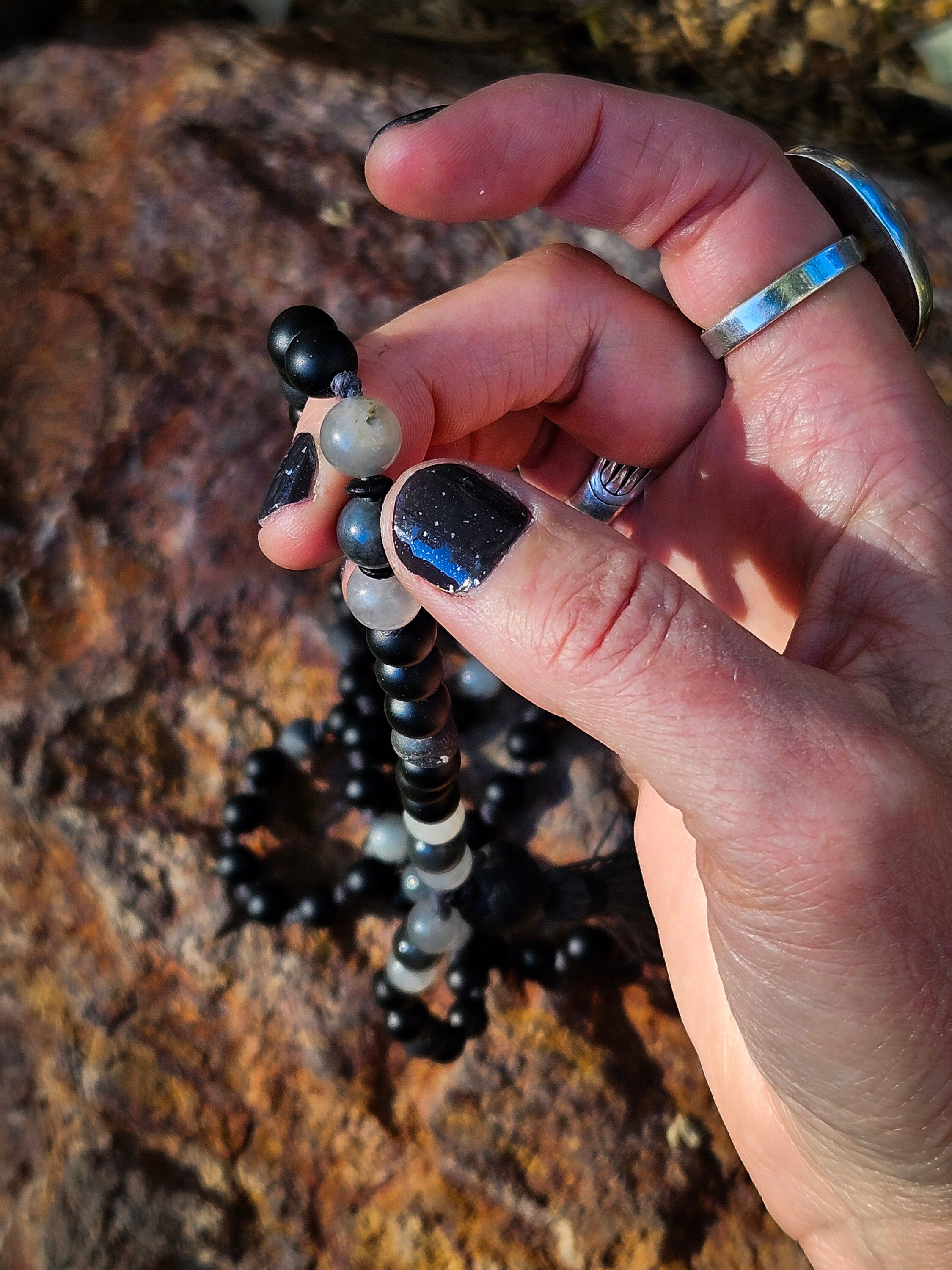If you've ever seen or heard about a mala and wondered what it is or how it’s used, you’re not alone. These beautiful strings of beads are steeped in history, culture, and purpose, and they serve as more than just accessories—they’re tools for mindfulness, meditation and connection.
A Brief History of Malas and Prayer BeadsThe word “mala” translates to “garland” in Sanskrit, and malas have been used for thousands of years in various spiritual traditions, especially in Hinduism and Buddhism. Originally, they were tools for counting prayers, mantras, or breaths during meditation. With 108 beads—considered a sacred number in many traditions—malas were designed to help practitioners maintain focus and intention.
Prayer beads, however, aren’t unique to Hinduism and Buddhism. Cultures worldwide have used similar tools. Catholic rosaries, Islamic misbaha, and Eastern Orthodox prayer ropes all serve a similar purpose: to aid in spiritual practice, prayer, or meditation. The mala stands out for its alignment with mindfulness and meditation practices, making it accessible and relevant in modern times for people from all walks of life.
What Are Malas Made Of?Traditionally, malas are crafted from natural materials like wood, seeds and gemstones. Each material is chosen not only for its aesthetic beauty but also for its metaphysical properties. For example:
- Wood beads, like sandalwood or rosewood, often symbolize grounding and peace.
- Gemstones, such as amethyst or turquoise, are believed to enhance energy, focus, or emotional well-being.
- Bodhi seeds, a traditional material, are tied to enlightenment, as Buddha was said to have attained enlightenment under the Bodhi tree.
Every mala is unique, infused with the intention and energy of its creation, which adds to its significance for the wearer.
How to Use a MalaMalas are most commonly used in meditation, but they also serve as meaningful reminders of intention and connection in everyday life. Here’s how to get started with your mala:
Set an Intention: Before using your mala, take a moment to reflect. What are you seeking? Peace, clarity, compassion? Hold your mala in your hands, close your eyes and silently state your intention.
Meditate with Your Mala:
- Hold your mala in your hand and use your thumb and middle finger to move from bead to bead.
- For each bead, recite a mantra, affirmation, or prayer that resonates with you. This could be as simple as “I am at peace” or a traditional mantra like “Om Mani Padme Hum.”
- Continue around the mala until you’ve gone through all 108 beads. The Guru Bead (the larger bead) marks the starting and ending point of your practice.
Wear it with Meaning: Beyond meditation, malas can be worn as necklaces or wrapped as bracelets. Each time you glance at your mala, it can serve as a visual reminder of your intentions.
The Benefits of Using a MalaUsing a mala can:
- Help you stay focused during meditation.
- Promote mindfulness and intentional living.
- Provide a sense of calm and grounding in daily life.
- Connect you to a rich history of spiritual and cultural traditions.
In today’s fast-paced world, malas are more than just beautiful pieces of jewelry—they are tools for reconnecting with yourself. Whether you’re a seasoned meditator or new to mindfulness, a mala can help you slow down, focus and find meaning in the moment.
If you’re curious about finding the perfect mala, visit my shop, where each mala is handcrafted with care and intention. I hope this post inspires you to explore the beauty and benefits of malas and maybe even start your own mindful journey.

